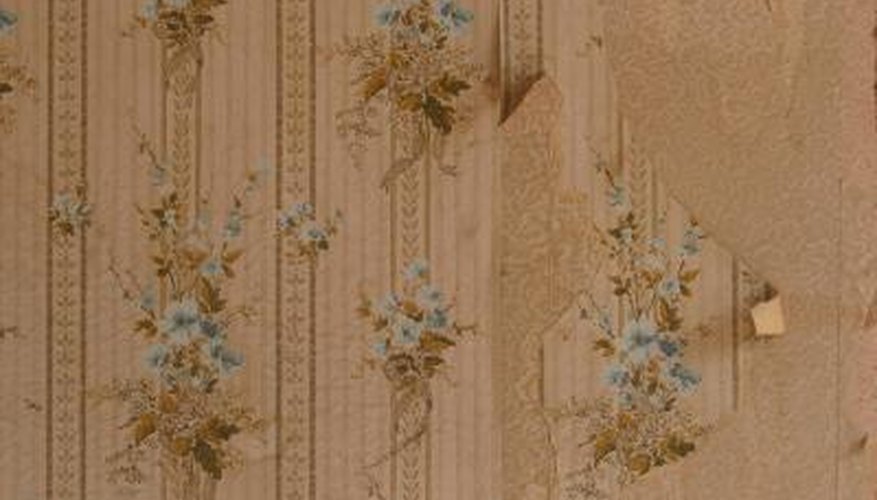Installing a new ceramic tile wall can completely revitalise the look of your home, and few products offer the huge variety of designs, colours and shapes that ceramic tiles provide. They can be especially helpful in covering up old and outdated wallpaper, but tile can only be installed over the wallpaper if it is not peeling and if it is completely flat and level; otherwise, you will need to strip the wallpaper and start over with a bare wall.
Wallpaper Preparation
Inspect the wallpaper surface to ensure that none of it is loose or peeling, and that the wall is completely flat and level in all places. Once you have confirmed that the area fulfils these requirements, you must roughen the smooth wallpaper surface with sandpaper or a wallpaper scoring tool, available from hardware and home improvement stores. Roughening the surface will provide a light texture to which the tile adhesive can easily cling. A completely smooth surface will allow the adhesive to slide down the wall, leading to uneven application.
- Inspect the wallpaper surface to ensure that none of it is loose or peeling, and that the wall is completely flat and level in all places.
- Roughening the surface will provide a light texture to which the tile adhesive can easily cling.
Wallpaper Removal
If your wallpaper is damaged or peeling, or if the wall behind it has damage or is not completely flat, you must remove the wallpaper to properly install ceramic tile. Pry up a corner of the wallpaper with a putty knife and gently pull at the paper; if it all comes off of the surface, you can simply pull it away and you're done. However, most wallpaper will stick better than that. For these, you will have to use a scoring tool to poke holes in the wallpaper's surface then saturate the entire surface with wallpaper adhesive solvent. Read all directions for this product since it often needs to be diluted with water. As the adhesive softens, you can then peel the wallpaper away.
- If your wallpaper is damaged or peeling, or if the wall behind it has damage or is not completely flat, you must remove the wallpaper to properly install ceramic tile.
- Pry up a corner of the wallpaper with a putty knife and gently pull at the paper; if it all comes off of the surface, you can simply pull it away and you're done.
Adhesive Removal
Even after all of the paper itself is gone, you may be left with spots or even a full layer of wallpaper adhesive stuck to the wall. The solvent should loosen this adhesive as well; and once it's loose, you can scrape it off with a putty knife. Make sure to use only the flat edge of the putty knife or you risk gouging the supporting wall behind. Remember that if your wallpaper is installed over drywall, the base wall can easily be damaged and crumple from over-saturation with water so use as little of the solvent and water, as possible, to remove all adhesive. Once the wall is clean, fill in any gaps or uneven areas with filler putty before installing tile.
- Even after all of the paper itself is gone, you may be left with spots or even a full layer of wallpaper adhesive stuck to the wall.
- The solvent should loosen this adhesive as well; and once it's loose, you can scrape it off with a putty knife.
Covering Wallpaper
Your final option, if installing tile over a papered wall, is to completely cover the old wallpaper. The most popular material for this is called cement backer board. It resembles drywall, except this product is completely waterproof and can therefore support a ceramic tile installation with a mortar adhesive. Attach the sheets of this material to the wall studs to cover the wallpaper and provide a safe surface to which you can directly apply your ceramic tile.
- Your final option, if installing tile over a papered wall, is to completely cover the old wallpaper.
